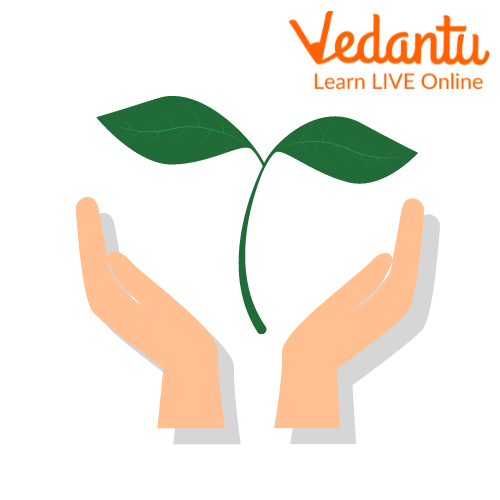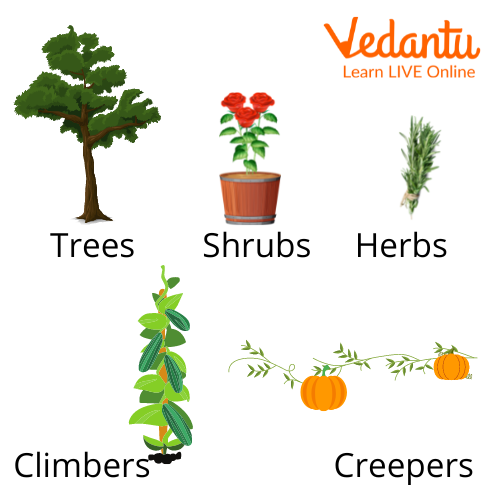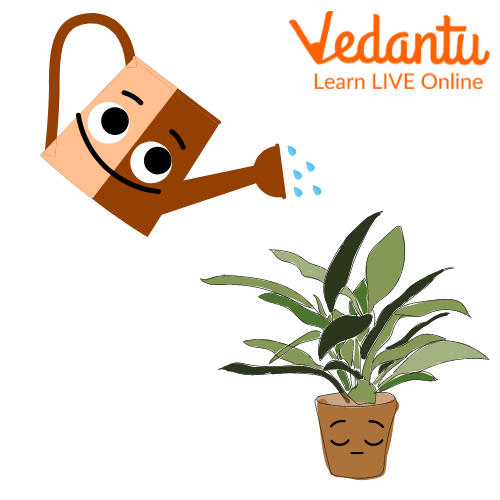




Types of Plants for Kids
A plant is defined as a living thing that grows on the earth. The parts of the plant include a stem, leaves, and roots. The plant provides food, fibre, shelter, medicine, and fuel. Let us understand what are plants in more detail.
Green plants produce energy for all organisms. They produce oxygen that helps us in the process of breathing and is essential for the survival of life. The different types of plants for kids are herbs, shrubs, trees, climbers, and creepers. In this article, we are going to learn about what are plants for kids and more information on plants for kids.

Plants for Kids
What are the Common Types of Plants?
The different types of plants for kids are as follows.
Herbs
Herbs are plants that provide us with fragrant or aromatic properties. This can be used to add extra flavour to food. Examples of herbs are Basil, parsley, rosemary, thyme, and dill.
Shrubs
The shrub is any woody plant with several stems and no dominant property. The shrub is usually less than 3 m tall. It may be called a bush when the shrub is much-branched and dense in this condition.
Trees
The tree is defined as a long-lived woody plant with a single, usually tall main stem with few or sometimes no branches on its lower part.
Climbers
The climbers are plants with long, flexible climbing stems that are rooted in the ground and usually have long dangling branches.
Creepers
The creepers are the plant that grows upon or just beneath the surface of the ground or upon any other surface, sending out the rootlets from the stem,

Types of plants
Facts About Plants for Kids
A few interesting facts about plants for kids are as follows:
The plants turn light from the Sun into food required for their growth.
Plants also need water and nutrients from the soil and the carbon dioxide that they take from the air.
The animals can eat plants so that they can use the food the plants created for their growth too.
The animals cannot turn the sun's energy into food. Hence they only get this energy by eating plants or by eating other animals.
The giant redwood tree is the biggest type of plant on earth.
Many plants reproduce by creating their seeds using pollen from other plants of the same type.
The plants use their flowers to attract other insects to carry pollen from one plant to the next.
The flowers have a sugary liquid known as the nectar that the insects eat when they are on the flower.
However, some plants spread their seeds by letting them float through the wind.
Not every plant gets all its energy from sunlight.
Plant adaptation is a phenomena in which a species develops any special features that improve its chances of survival. The adaptations evolve over a long period, and they are inheritable, meaning they are passed onto offspring.
The plants can be big giant trees or small, tiny patches of moss. With the help of a process called photosynthesis, plants produce their own food. During this process, the plants convert the light from the sun into food. The plants use a process called photosynthesis to turn sunlight into food in their leaves.
They use this produced food to grow. For the growth of plants, they also need water and nutrients that they take from the soil with the help of their roots and carbon dioxide that they absorb from the air.

Watering of Plant
Summary
So, this brings us to the end of this article where we have discussed all the information on plants for kids like their types as well as their characteristics. Plants are living things that grow from the soil and turn light from the Sun into food. The plants can be big giant trees or small, tiny patches of moss. With the help of a process called photosynthesis, plants produce their food.
The green plant produces the primary food for all organisms. The oxygen is released during the process of food production. Herbs, Shrubs, Trees, Climbers, and Creepers are different types of plants. Many plants reproduce by creating their seeds using pollen from other plants of the same type. The plants use their flowers to attract other insects to carry pollen from one plant to the next.
FAQs on What are Plants for kids?
1. What are the different parts of the plant?
The parts of the plant include a stem, leaves, and roots. The plant provides food, fibre, shelter, medicine, and fuel. The green plant produces the primary food for all organisms. The plants use their flowers to attract other insects to carry pollen from one plant to the next. The oxygen is released during the process of food production. Herbs, Shrubs, Trees, Climbers, and Creepers are different types of plants.
The different parts of plants are:
Bulb
Carpel
Flower
Fruit
Germination
Leaves
Ovary
Nectar
Petal
Pollen
Seed
Stalk/stem
Stamen
Stigma
Style
Tree
Tuber
Vegetable
2. What is respiration in plants?
The process of inhalation and exhalation together is known as respiration. Plants breathe in carbon dioxide during the day and breathe out oxygen. But during the night it is the opposite. During night plants take in oxygen and give out carbon dioxide.
3. Why are plants important?
Plants are really important for the planet and all living things. Plants absorb carbon dioxide and release oxygen from their leaves, which humans and other animals need to breathe. Living things need plants to live - they eat them and live in them. Plants help to clean water too.









